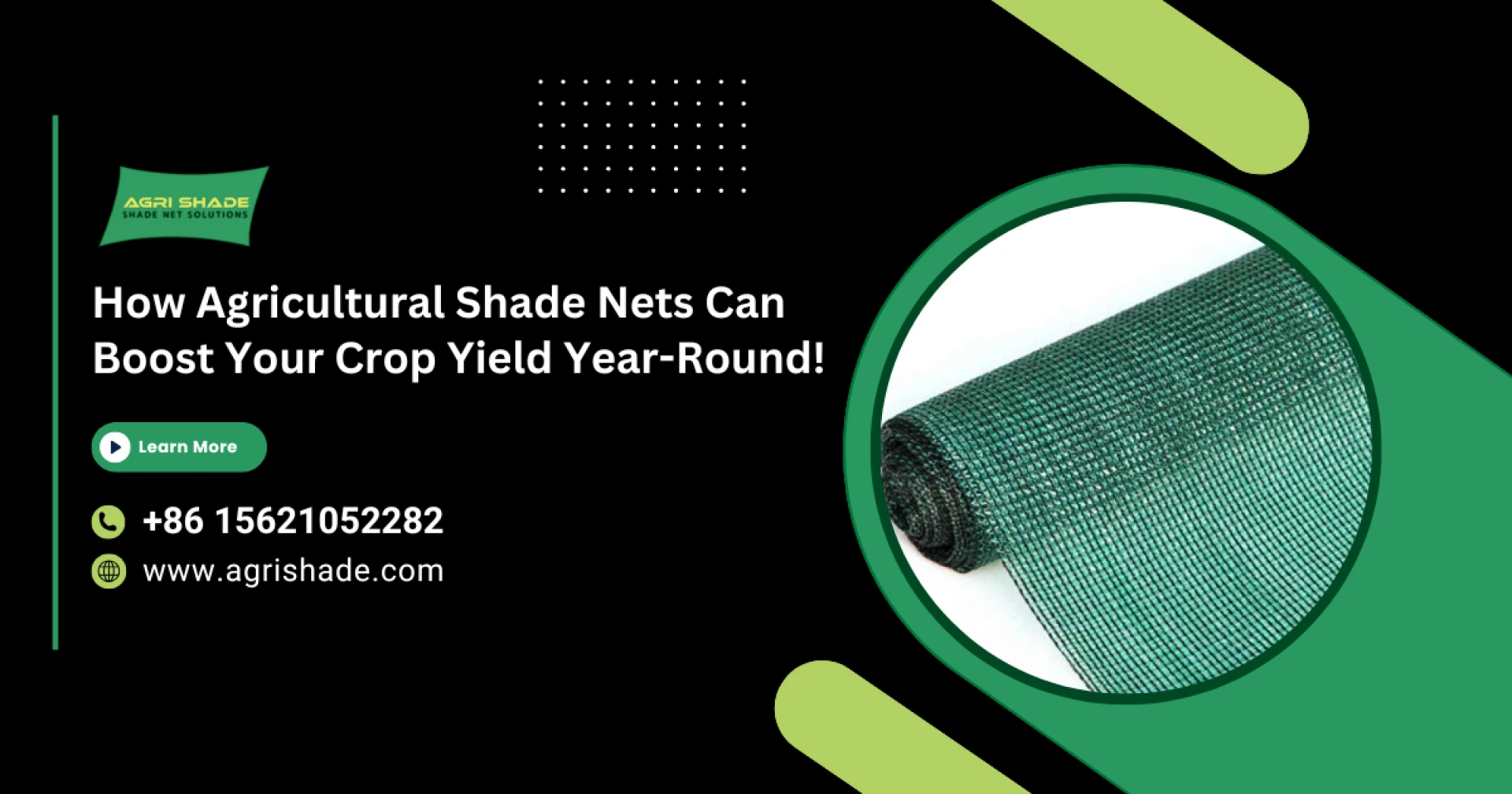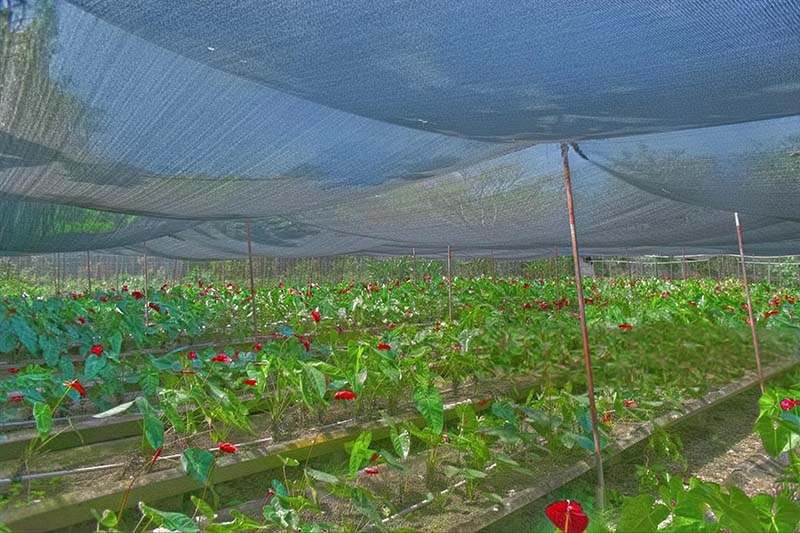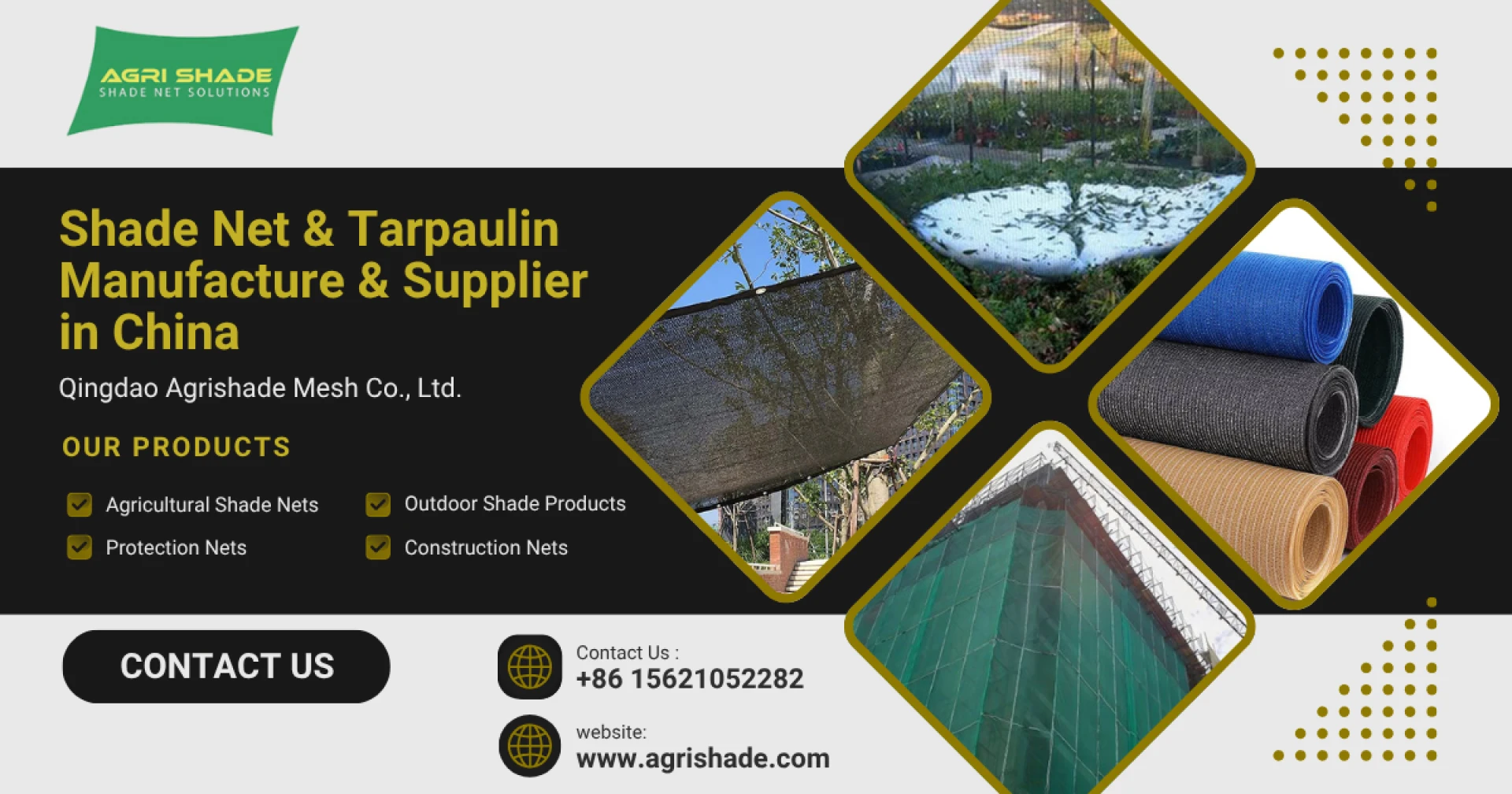In today's ever-changing agricultural landscape, farmers and growers face a host of environmental challenges that directly impact crop production — rising temperatures, unpredictable weather patterns, increased solar radiation, water scarcity, and pest infestations. Agricultural Shade Nets have become an essential solution to combat these issues effectively. As global demand for food increases and agricultural land becomes more limited, the pressure to intensify crop yield — sustainably and efficiently — has never been greater.
Enter a simple yet powerful solution: Agricultural Shade Nets.
These specialized nets are not just fabric stretched over crops — they are highly engineered tools designed to moderate sunlight, control microclimates, reduce heat stress, and create optimal growing conditions across different seasons. With the correct use of agricultural shade nets, farmers can extend growing seasons, improve the quality of produce, protect against harsh weather, and ultimately increase yield consistently.
At Qingdao Agrishade Mesh Co., Ltd., we’ve spent years designing and manufacturing advanced shade netting solutions for growers across the world. Whether you cultivate vegetables, fruit trees, ornamental plants, or greenhouse crops, our agricultural shade nets are built to deliver performance, durability, and measurable results.
What Are Agricultural Shade Nets?
Agricultural shade nets are woven or knitted mesh fabrics made from UV-stabilized polyethylene or polypropylene, designed to filter sunlight and create a controlled microenvironment for plants. These nets are available in various shading percentages (from 30% to 90%) and colors, depending on the crop’s light requirement and climate conditions.
The structure of the net allows partial sunlight to pass through while reducing solar radiation, wind exposure, excessive evaporation, and damage from dust or hail. The nets can be used in open fields, shade houses, greenhouses, tunnels, and nurseries.
Why Shade Nets Are Essential for Crop Yield
Let's explore how the use of agricultural shade nets contributes to increased crop productivity throughout the year.
1. Temperature Regulation
One of the biggest challenges in agriculture is managing heat stress. Crops exposed to intense sunlight during peak seasons often experience water loss, slowed growth, or even crop failure. Agricultural shade nets help regulate the temperature by blocking a percentage of sunlight, creating a cooler environment that promotes healthier plant growth.
- Summer Season Benefit: Reduces leaf burn and dehydration.
- Winter Season Benefit: Helps trap warm air, maintaining an ideal growth temperature.
2. Improved Photosynthesis Efficiency
It may sound counterintuitive, but too much sunlight can actually inhibit photosynthesis. Shade nets filter excessive light, ensuring optimal light diffusion. This improves photosynthetic activity, which translates to faster growth and better yield.
For crops like tomatoes, cucumbers, bell peppers, and lettuce, this balance is crucial for flowering, fruiting, and leaf quality.
3. Protection from Harsh Weather Conditions
During the growing cycle, crops are vulnerable to environmental threats, including:
- Wind damage
- Heavy rain
- Hailstorms
- UV radiation
High-quality agricultural shade nets act as a protective canopy, reducing physical damage and soil erosion while allowing airflow and water penetration. The net serves as a barrier against destructive elements, maintaining crop integrity even under unfavorable conditions.
4. Extended Growing Seasons
By moderating temperature and light levels, shade nets allow crops to be grown earlier in the season or extended into the off-season. This creates opportunities for:
- Off-season production
- Staggered harvests
- Multiple crop cycles per year
With this kind of climate control, growers can take advantage of market demands and higher prices for off-season produce.
5. Reduced Water Usage
Shading reduces evaporation from both the soil surface and plant leaves. This conserves water, lowers irrigation needs, and is particularly beneficial in drought-prone regions or areas where water access is limited.
Farmers using shade nets often report up to 40% water savings, making agriculture more efficient and sustainable.
6. Pest and Bird Protection
Insects and birds not only damage crops, but they also spread disease. Certain colors and meshes of agricultural shade nets can deter pests and birds, minimizing the need for chemical pesticides.
Reducing spray use helps keep produce free from chemical residues and supports organic cultivation practices.
How to Choose the Right Agricultural Shade Net
Selecting the right type of net depends on several factors:
1. Shading Percentage
- 30–40%: Ideal for crops needing more sunlight – tomatoes, peppers
- 50–60%: Suitable for moderate shade lovers – leafy greens, cucumbers
- 75–90%: Best for nurseries, delicate flowers, or very hot climates
2. Color
Different colors influence light quality and crop performance:
- Green: General purpose, widely used
- Black: Offers better UV protection and cooling
- White: Reflective, helps in light diffusion
- Red/Blue: Used experimentally to influence flowering and fruiting
3. Material Strength & UV Protection
Always opt for UV-stabilized nets with high tensile strength. Qingdao Agrishade Mesh Co., Ltd. uses HDPE that ensures long life even under tough weather conditions.
4. Application Type
Do you plan to use the net in open fields, tunnels, or greenhouses? Each setup might require different accessories like grommets, tie cords, or poles.
Applications of Agricultural Shade Nets
- Greenhouses
- Nurseries
- Open-field farming
- Horticulture
- Livestock sheds
- Aquaculture ponds
- Drying yards
- Temporary shelters
Also Read: Applications for Agricultural Shade Nets [Infographic]
Qingdao Agrishade supplies nets tailored for each of these applications, including custom sizing and private labeling options for distributors.
Why Choose Qingdao Agrishade Mesh Co., Ltd.?
With over 20 years in the netting industry, Qingdao Agrishade Mesh Co., Ltd. is a trusted name among growers, agricultural institutions, and distributors around the globe. Here’s what sets us apart:
✅ State-of-the-art Manufacturing Facility
✅ ISO Certified Production Process
✅ UV-Stabilized, Long-Life Materials
✅ Global Shipping and Fast Delivery
✅ Competitive Pricing for Bulk Orders
✅ Expert Support and Free Consultation
We provide a wide range of netting products, including shade nets, anti-insect nets, scaffolding nets, debris netting, bird netting, and more — all customized for the agricultural and construction sectors.
Invest in Shade Nets, Reap Long-Term Rewards
Agriculture is no longer just about planting at the right time — it’s about creating the perfect growing environment year-round. With increasing climate variability and rising input costs, the ability to control microclimates and protect crops becomes the difference between success and failure.
By investing in agricultural shade nets, you’re not only ensuring higher yields but also paving the way for sustainable, high-efficiency farming practices.
Frequently Asked Questions (FAQs)
Q1: How long do agricultural shade nets last?
A: High-quality shade nets from Qingdao Agrishade last between 3 to 7 years, depending on usage, exposure, and UV intensity.
Q2: Are shade nets suitable for all climates?
A: Yes. They can be used in tropical, arid, and temperate climates to control heat, light, and moisture. Proper selection of shade percentage is essential for the best results.
Q3: Can I use shade nets in combination with greenhouse structures?
A: Absolutely. In fact, greenhouse shade nets offer a dual layer of protection, enhancing insulation and extending the crop cycle.
Q4: Do agricultural shade nets require maintenance?
A: Minimal maintenance is needed. Clean the nets occasionally to prevent clogging with debris or dust. Regularly inspect for tears or degraded areas.
Q5: Is there a difference between knitted and woven shade nets?
A: Yes. Knitted shade nets are lightweight and more flexible, ideal for draping and roll-up systems. Woven nets are more rigid and used for permanent structures.






